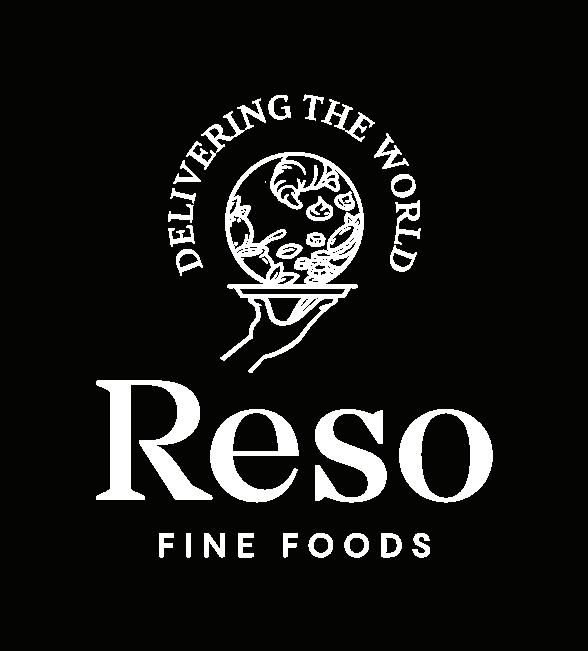




Governments around the world understand the crucial role of providing healthy and nutritious meals to schoolchildren, which directly affects their physical and mental health, academic performance, and overall well-being. To ensure that school lunches meet specific nutritional standards and are affordable, various policies and programmes are in place globally. These initiatives can involve partnering with local suppliers for fresh and locally sourced produce, providing subsidies or free meals to low-income families, and implementing guidelines for food preparation and safety.
However, a significant challenge is policing the type of supplier that a school is using. Ensuring that all school lunch providers adhere to relevant health and safety protocols, making auditing of providers compulsory so that food preparation and safety guidelines are adhered to. It is no time to employ novices
in the business of providing school lunches. Experienced foodservice providers know how to provide the service and have the professional knowledge and skill to provide the meals safely.

The COVID-19 pandemic has also impacted school lunch programmes, with many schools forced to switch to remote learning or implement social distancing measures, making it challenging to provide meals on-site over the past three years. This has left many school lunch providers struggling to stay afloat under challenging supply chain issues and alert lockdowns.
Regardless of any change in Government this year, the need to reduce food insecurity among New Zealand children by providing access to a nutritious lunch every day through the Healthy School Lunch programme will continue. The challenge will be to reduce food waste by identifying the nutritional needs of children and engaging in a community/school discussion with suppliers since there is no onesize-fits-all solution to menu options.
Whether through on-site meals, delivery, or other innovative solutions, it is vital to ensure that schoolchildren receive adequate nutrition and given the cost of living crisis, that meal needs to continue to be subsidised.
Publisher
Tania Walters
General Manager Kieran
Editorial Director Sarah
Managing Editor Caitlan
Mitchell Mitchell MitchellEditorial Associate Joe Tollemache
Advertising Caroline Boe
Senior Designer Raymund Sarmiento
GOOD SOURCE OF PROTEN 99% FAT FREE EXCELLENT SOURCE OF FIBRE
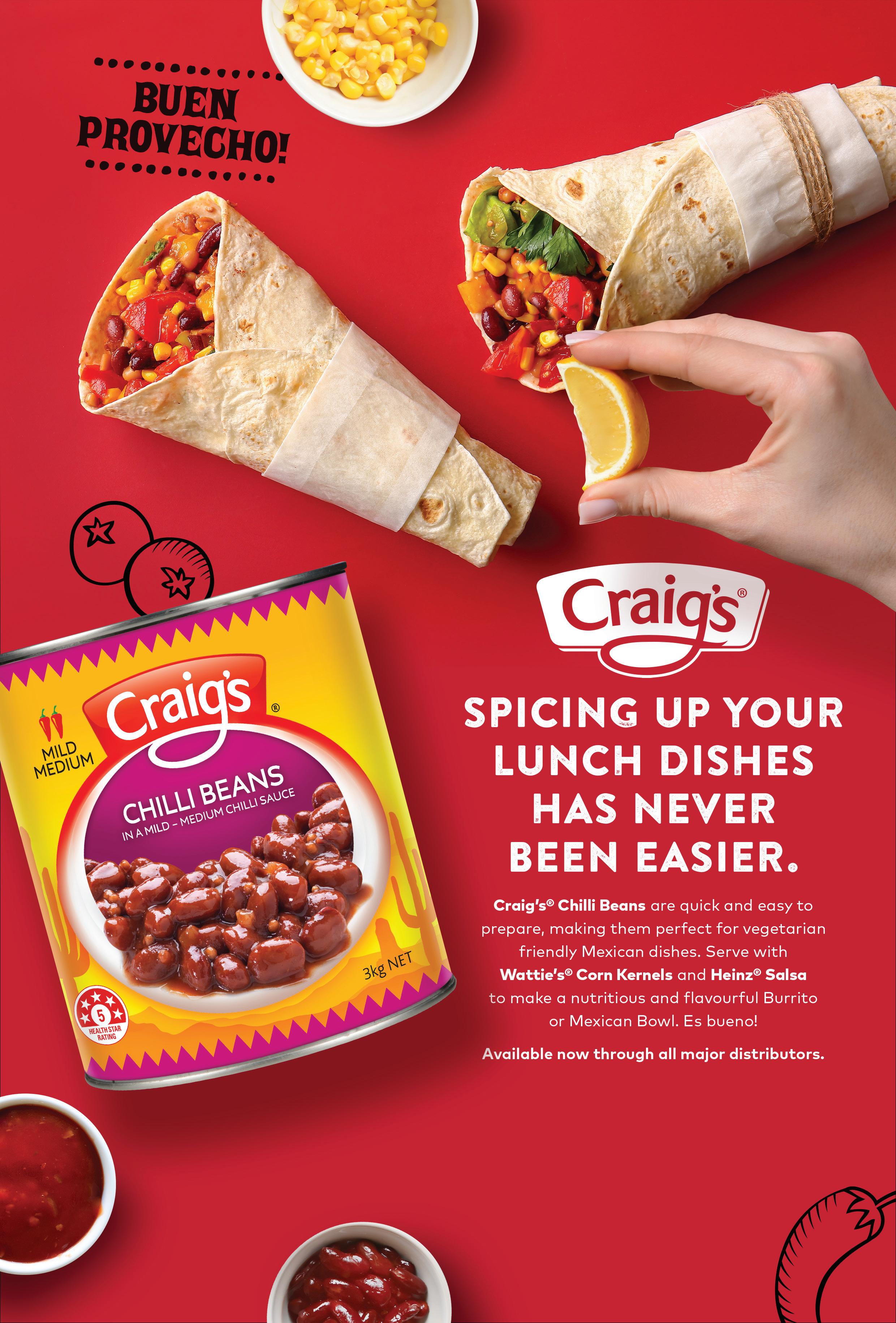
FED has been a key player in supporting the Ka Ora Ka Ako school lunch programme for two years. We spoke to Becky Erwood, co-founder of FED, to get an inside scoop on what it’s like.
Specialising in marketing and customer service, Erwood plays a crucial role alongside David and Beckie Pilley, who oversee logistics, operations, and menu development and production.
Collectively, the three like-minded individuals came together, and FED was created, a prepared meal business specialising in the production of readyto-eat meals. Since 2018 they have been delivering meals to homes and schools nationwide.
Starting in 2021, FED began working alongside ten schools in South Auckland. FED has partnered with 17 schools across South, West, and East Auckland as of 2023.
With a tight-knit team of 14 who work cohesively to distribute and manage relationships with schools, the three directors oversee these processes to ensure all areas run smoothly.
FED understands that all staff’s necessary guidance, support, and training are vital to conducting a positive system that drives the team in the right direction.
“Building effective relationships with schools, the wider community, cultural groups, developing menus, and collecting feedback from schools help us improve the lunch offering continuously.”
Working alongside the school lunch programme proves to be equally rewarding as it is challenging. Going in relatively blind to the students’ reaction, FED took the initiative to collaborate with students and the broader community of Auckland schools. Since day one, it has been a priority for the students and community members to enjoy the food to reduce wastage.
FED understands the pressures that come with the mass production of food. Hence, this feedback system allows for less food wastage and more students full.
Furthermore, as the lunches are packaged in fully compostable lunches, managing waste is far more convenient for all parties involved.
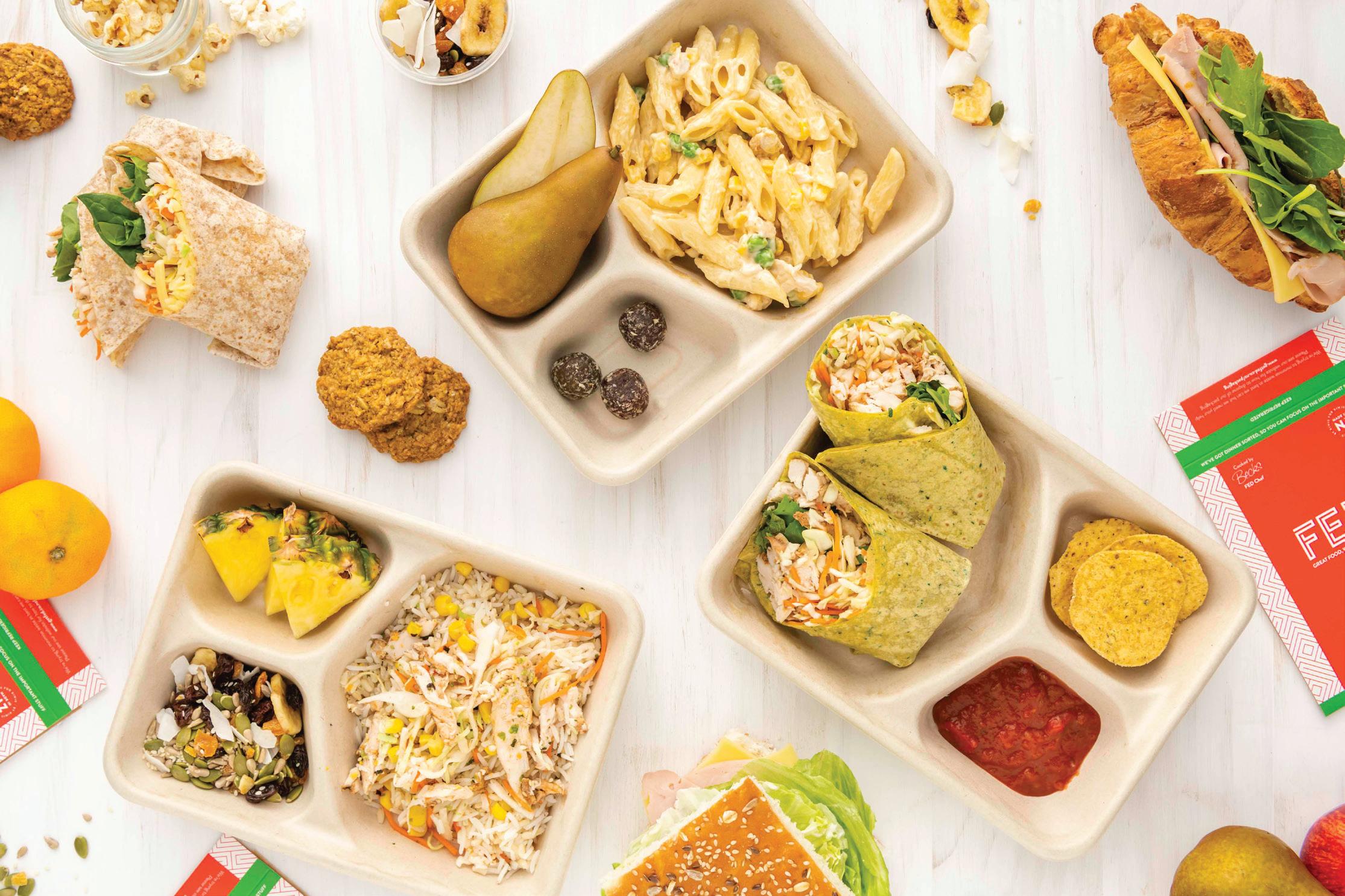
Additionally, FED supplies green compostable bags to all schools, exported from schools through Green Gorilla, a company partner. With an extensively thought out plan to mitigate waste, all remaining waste is taken to a third-party composting facility, Envirofert, a partner.
“Seeing the changes it has made to individual students and the school culture has been incredible. We get a real kick from seeing the students come together for kai time and devour their meals,” said Erwood.
Using a range of producers and suppliers, including Loaf, Gonuts, and Mrs Higgins, FED specialises in hot meals, which have been a fan favourite since the program’s inception. Having a new dish for each term also provides alternative options
for students, shifting from chicken curry to beef stew and mash.
Since the team has direct communication channels from the office to the schools, FED sees the reaction from the students. Observing how the students receive the food and their opinions provides organic reviews and allows for easier understanding when changing the menus.
On the other hand, Erwood mentioned the rewarding part when all the meals are gone, and the students come back asking for more because they enjoyed it.
As the months move into winter, FED looks to increase the number of hot meals offered. While providing 5500 meals daily doesn’t make this easy, the passionate and consistent team ensures all processes run smoothly and that all schools have enough lunches.

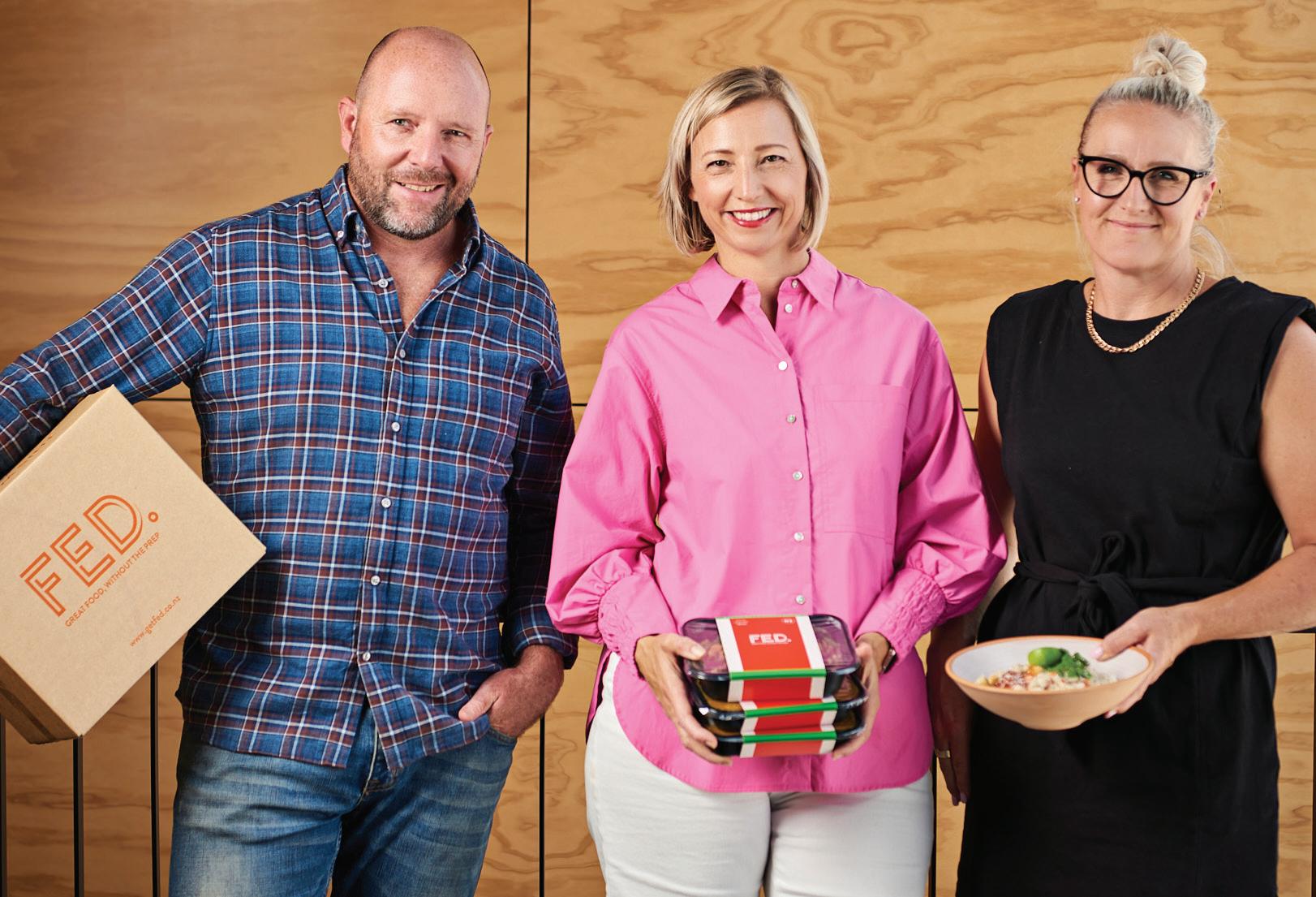
Erwood commended the team at FED for changing lives, one story at a time. At one of the primary schools, a young boy had been losing interest in physical activity, his school work was suffering, and his general well-being was disheartened due to poor nutrition. After one term of the programme, he consistently ate and participated in
sports. This flow-on effect gave him a positive outlook and increased school performance.
“That was a great moment, seeing the changes in our team and what we do making a difference in students’ lives.”
As FED continues its partnership with
Ka Ora Ka Ako, they understand that what they’re doing is not just feeding students, it’s about providing people with the opportunity to be educated about the importance of food and how it can be provided back into the community. The results are far-reaching. H
Governments around the world understand the crucial role of providing healthy and nutritious meals to schoolchildren, which directly affects their physical and mental health, academic performance, and overall well-being.
To ensure that school lunches meet specific nutritional standards and are affordable, various policies and programmes are in place globally. These initiatives can involve partnering with local suppliers for fresh and locally sourced produce, providing subsidies or free meals to low-income families, and implementing guidelines for food preparation and safety. However, a significant challenge is policing the type of supplier that a school is using. Ensuring that all school lunch providers adhere to relevant health and safety protocols, making auditing of providers compulsory so that food preparation and safety guidelines are adhered to. It is no time to employ novices in the business of providing school lunches. Experienced foodservice providers know how to provide the service and


have the professional knowledge and skill to provide the meals safely.



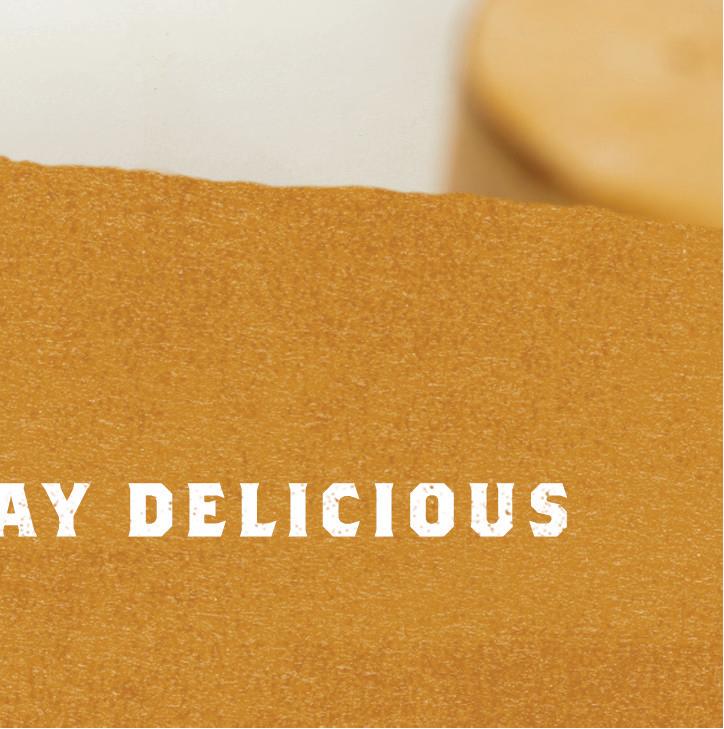
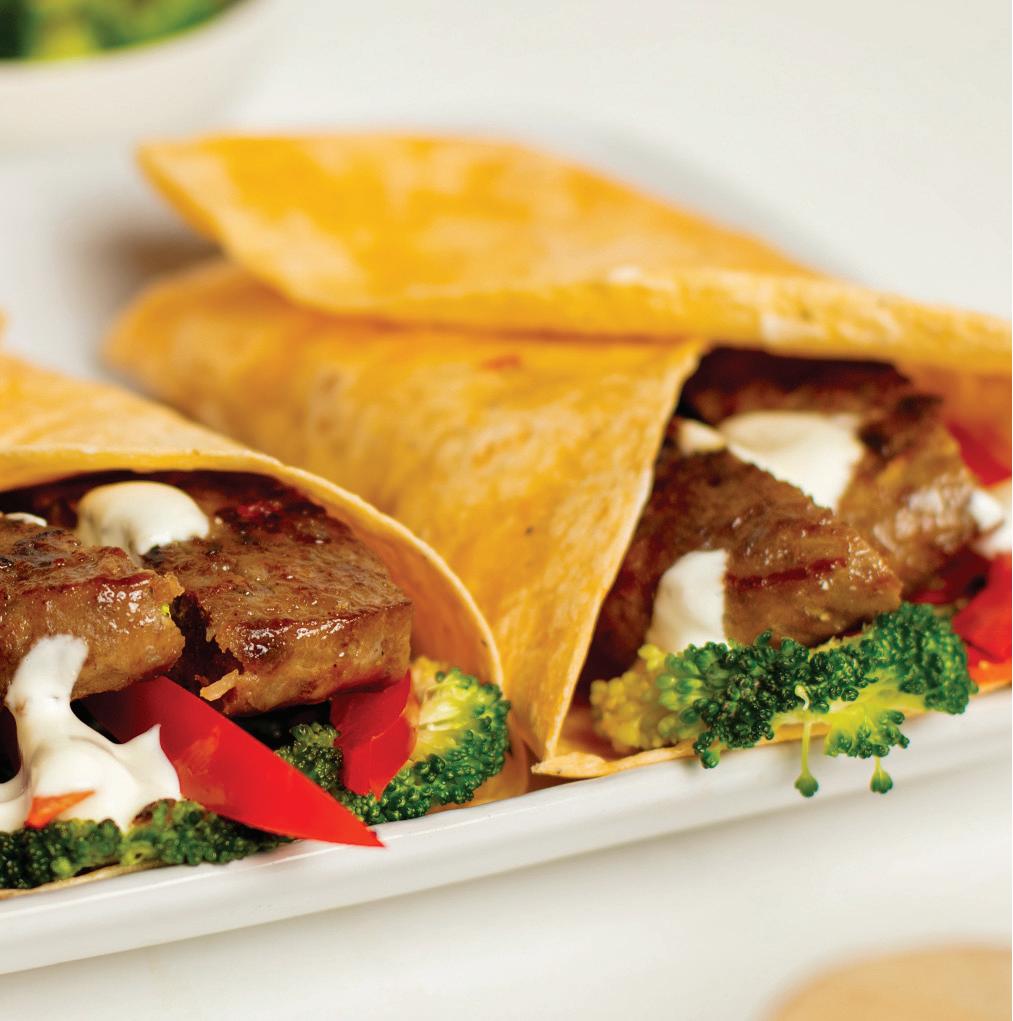

The COVID-19 pandemic has also impacted school lunch programmes, with many schools forced to switch to remote learning or implement social distancing measures, making it challenging to provide meals on-site over the past three years. This has left many school lunch providers struggling to stay afloat under challenging supply chain issues and alert lockdowns.
Regardless of any change in Government this year, the need to reduce food insecurity among New Zealand children by providing access to a nutritious lunch every day through the Healthy School Lunch programme will continue.
The challenge will be to reduce food waste by identifying the nutritional needs of children and engaging in a community/ school discussion with suppliers since there is no one-size-fits-all solution to menu options.


Whether through on-site meals, delivery, or other innovative solutions, it is vital to ensure that schoolchildren receive adequate nutrition and given the cost of living crisis, that meal needs to continue to be subsidised. H


Angel Bay ticks all the boxes when it comes to School Lunches.

Need help with supplying quality lunches?
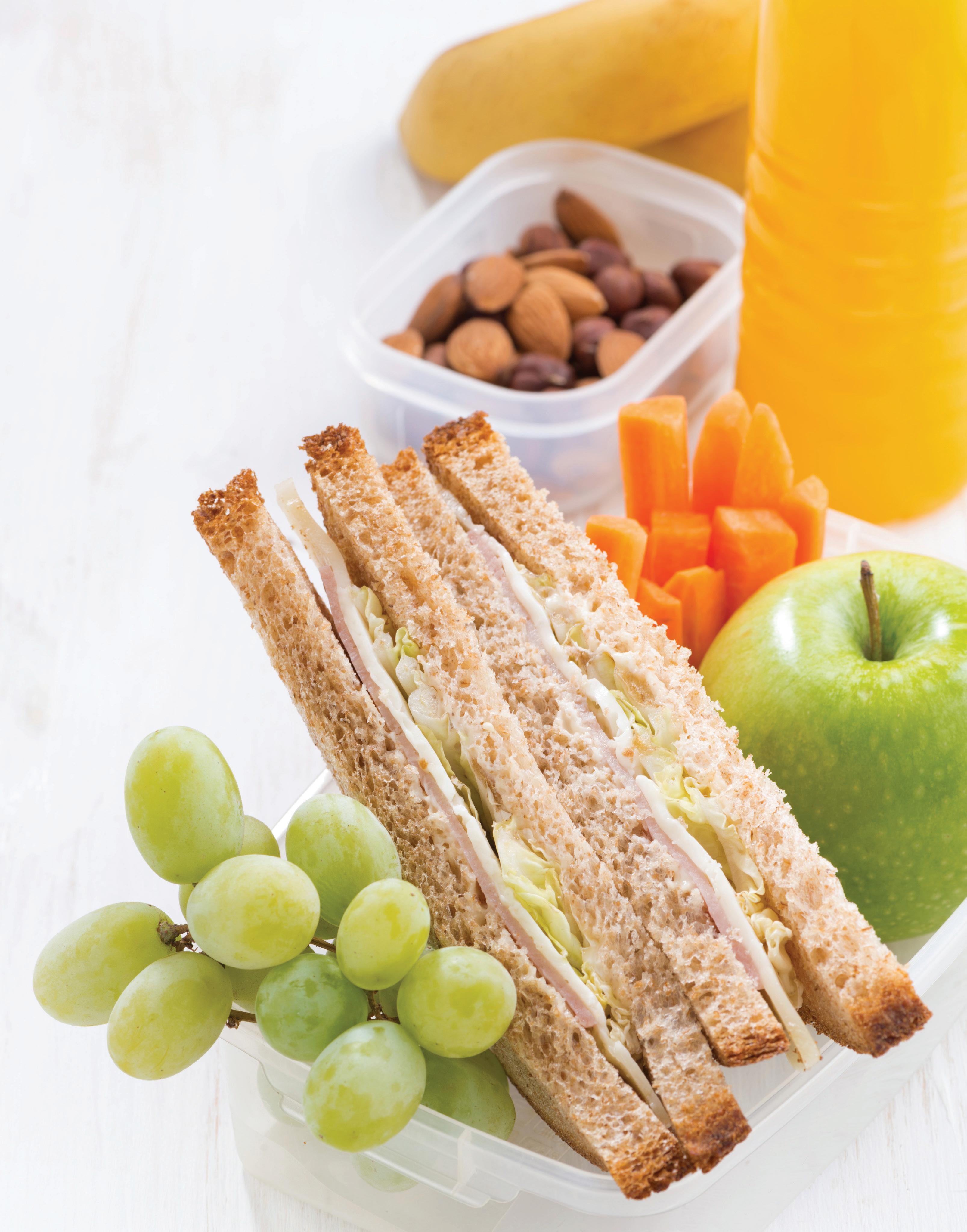
We have everything you need, so put Gilmours on the menu today.
gilmours.co.nz
Libelle has been one of the key players in the Ka Ora Ka Ako programme. As they, like many others, have been affected by the recent events from COVID-19 to the floods, we spoke to Menu Development Manager, Anya Bell, to gather some insights.
Bell has been a professional cook for many years, travelling around the world and feeding a variety of hungry tummies. In 2013, Bell transitioned into professional childcare, cooking and feeding infants and young children.
The shift to focusing on developing healthy, informed, responsible, and positive relationships between children and their food has broadened from infants to adolescents, attempting to understand the nutritional needs of all.
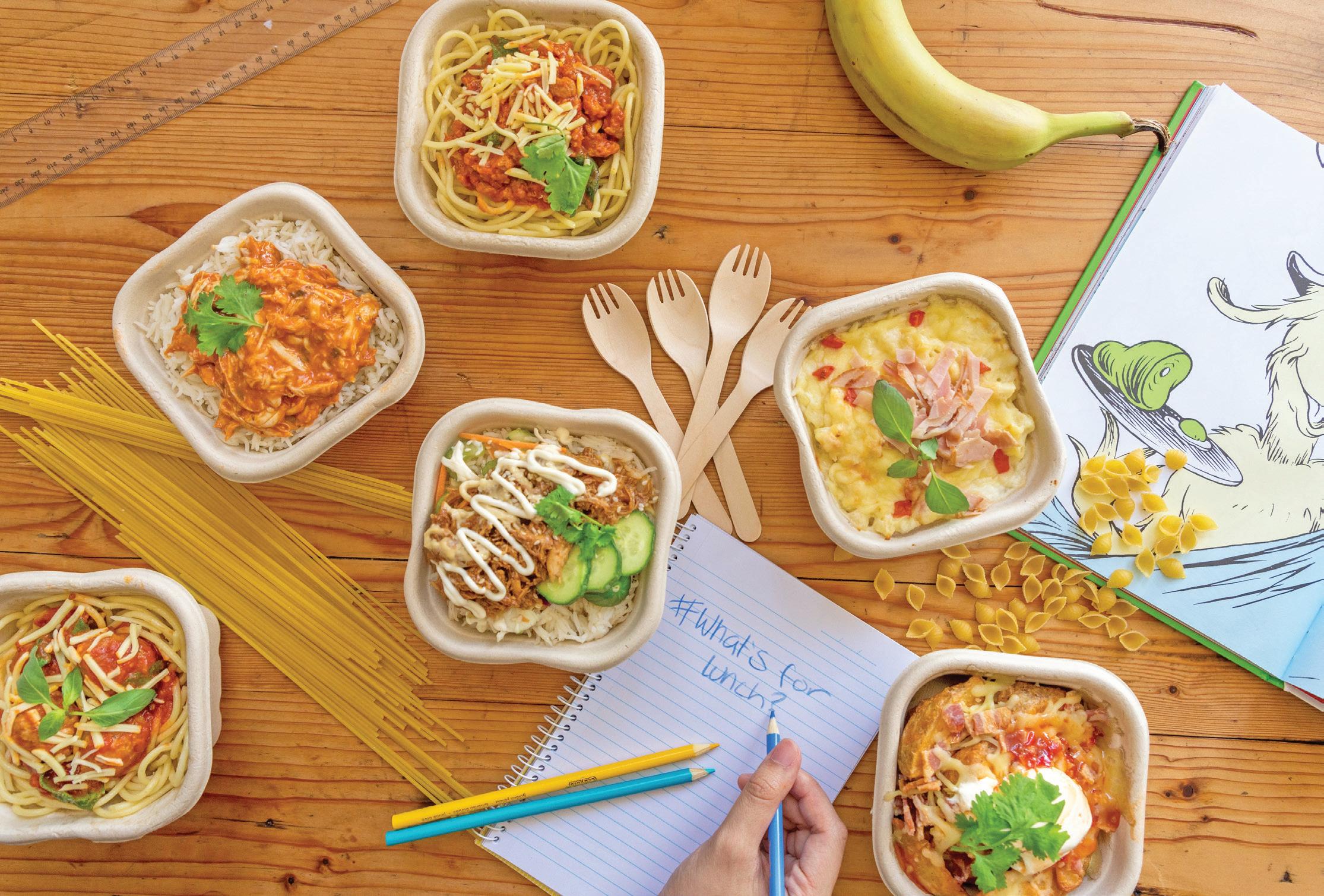
Through the Menu Development role, Bell intertwines optimum nutrition with typical eating habits of the learners of today, with the intent to develop a pathway towards better eating habits. The detail behind the scenes requires working with the chefs in different kitchen models, food suppliers, distribution chains, and packaging suppliers, and fitting meal costs into budgets.
Of course, this requires further data collection through student feedback, current food trends, understanding motives, and staying on top of the Ministry of Education’s nutrition standards. For Bell, her day-to-day life is all about food
and how it impacts the youth. Serving approximately 30,000 students per day with their Ka Ora, Ka Ako lunches to more than 150 schools from the far North to Otago, Libelle is always prepared. Students are fed daily by catering to thousands of students and teachers, having almost 60 tuckshops, and running a boarding school food solution.
Libelle didn’t achieve this through luck, they intended to lead the school food space by collaborating with a national team of dedicated and experienced foodies eager and willing to cater for any school, regardless of size. The team at Libelle is an innovative New Zealandowned company accepting challenges and is ready to provide solutions. Zoe Fisher, marketing and communications manager, said, “We’ve recently opened a central manufacturing facility in Hamilton, which allows us to mass produce nutritious and fresh meals, meaning students are guaranteed to receive the right balance in their lunches every single day, freshly and sustainably.”
Sustainability is at the forefront of Libelle’s programmes, ensuring the packaging is recyclable or disposed of in
the most environmentally friendly way.
At the core of Libelle is a hunger to journey towards healthier eating and adapting to often malleable palates. Finding solutions to the limited resources within the Ka Ora, Ka Ako space to feed more children or making feeding times a valuable experience are critical.
The introduction of working with local farmers and growers to support them and bring them into the menus would be a milestone for Libelle. To provide a space where sharing a meal is not just limited to broadening their appetite, but rather induce a space for connection and understanding the broader world through various cuisines.
“Our goal is to have a wide variety of global cuisines, including our own, reflecting our communities that will eventually be recognised as a uniquely Aotearoa Menu,” commented Bell.
Of course, broader menus mean adapting to various dietary requirements, which Libelle are working towards providing allergen-free options. Furthermore, attempting to explore special diets to cater for athletes, balancing hormones or targeting regional nutritional deficiencies.

Covering several different outlets, Libelle’s Menu Advisory group is the best place for all team members to come together and produce the best-fitting menu for today’s standards. Working alongside head chef David Bisschops, who is very experienced and brings in knowledge about taste, flavours, and how to maintain a meal’s integrity while producing in bulk, has been crucial. The menu creation is based on a framework balancing nutrients throughout the week and then moulding this menu to incorporate favourites, something familiar and something new.
Despite these new and innovative ideas, Libelle faced hardships like many others within the Ka Ora Ka Ako programme. Specifically in the food supply chain, changing to last-minute meals or menu changes have been unavoidable. The extreme weather event has further created disruptions between operations and those on the ground.
However, Bell and the team at Libelle are optimists and are taking on these challenges full steam ahead. When pizza bases were essentially unobtainable, Libelle pivoted towards a pizza pasta which became a huge success.
Johannes Tietze, founder and ExecutiveDirection of Libelle Group, added, “It’s crucial to pool sector-wide experience to move into a minimal waste and develop maximum return businesses as a usual model. This has begun with our relationships with the suppliers, collaborating and sharing insight.”
Tietze noted that they intend to offer this support to smaller suppliers through their forum of principals and school leaders called Principles Of Nutrition in Education (PONIEs).
As innovations continue incorporating more technology, Libelle recognises that lunches need sustainable nutrition to fuel tomorrow’s learners. With greater access to education about what students need, there is likely to be a shift in students’ desires.

“What I would like to see is an investment into creating sustainable eating spaces within schools, attached to a kitchen that can service the number of students in a school,” commented Bell.
With a new and improved model, provided the facilities available, the ability to provide salad bar foods, nutritious hot food, and eating with friends and other peers will likely increase student wellbeing, learning, and many goals aligned with Libelle’s values. H


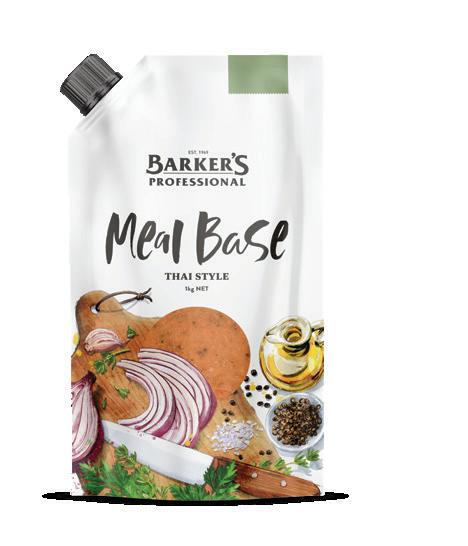

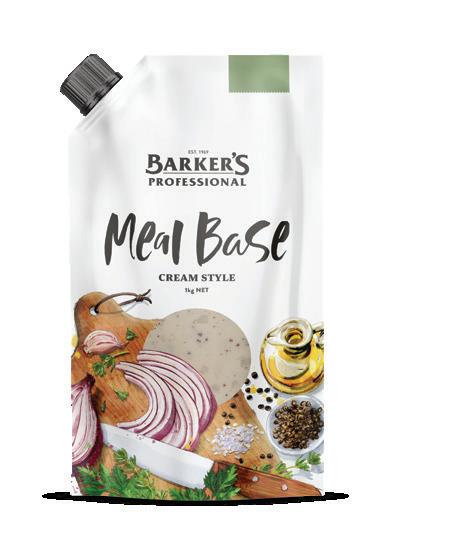


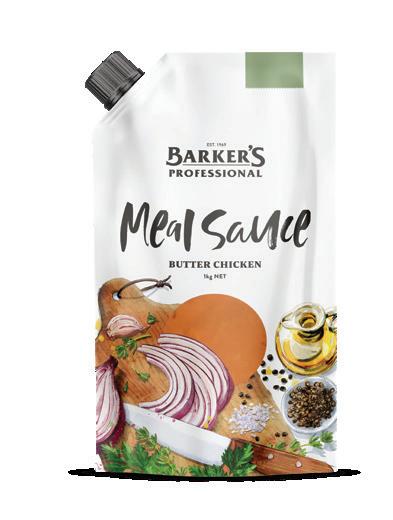



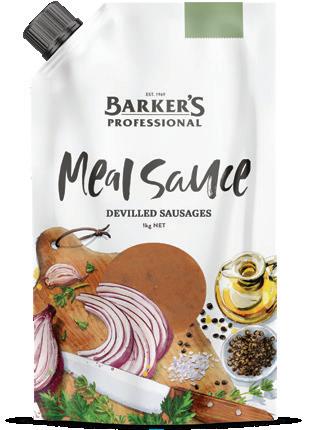





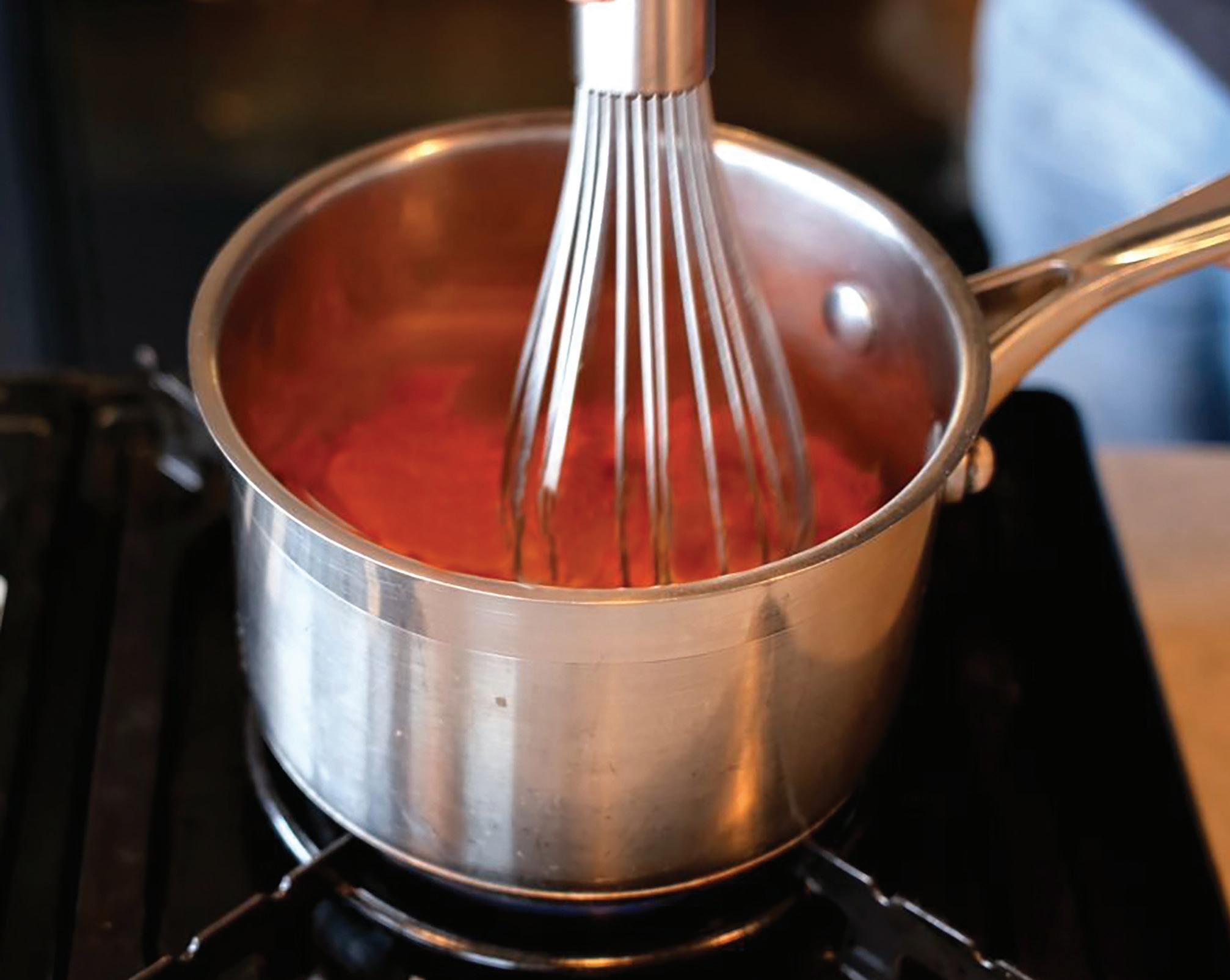





The shift towards ethical and sustainable packaging is becoming more and more known. While steel lunch boxes and straws have entered schools and communities, Honeywrap is on a similar mission, using a unique tool to pave the way.
Founded in 2013, Honeywrap was born out of Waikato. Becoming New Zealand’s original sustainable beeswax wrap company. The beeswax wraps promote sustainable practices with a reusable and natural alternative to plastic wrapping.

Made from certified GOTS organic cotton, Honeywrap displays a competitive

advantage through its point of difference. Focusing on three improvements through the usage of GOTS cotton. It’s better for the environment, the farmers that grow the cotton, and ultimately for the wraps at the end of their life cycle.
While each Honeywrap saves the equivalent of 75 metres of plastic wrap over its lifetime, the Honeywrap community have saved over 40 million metres of plastic wrap ending up in our landfills, waterways and oceans.
At the core of Honeywrap’s ethos is social responsibility. Donating funds and contributing towards charities and organisations on a collection of projects create a mutually beneficial relationship. Such projects include Forest & Bird and Save the Kiwi to raise funds and awareness for the work they do.
The wraps are designed in New Zealand by local artists who have created unique and beautiful designs. Creating a circular
economy for New Zealanders by utilising national designs creates work for the designers.

“We like to promote our artists and showcase their designs to help them thrive, which is a win-win,” said Wendy Oliver, Owner of Honeywraps.
Continuously aiming for zero waste is central to Honeywrap operations. Reducing off-cuts on the beeswax, they have been recycled to produce Honeywrap Firestarters. The fire starters are environmentally friendly and help to repurpose the Honeywrap.
Being BCorp Certified is internationally recognised as a symbol of social and environmental performance, charitable giving, continuous improvement and accountability to balance profit for a more sustainable economy. Further making a point of Honeywrap’s active pursuit to reflect these values.
Honeywrap has a massive application for schools and suppliers. Replacing plastic wrap and plastic in everyday household items will not only reduce single-use items, but it will also generate better sustainable practices. Furthermore, it will shed light on the critical work bees, and beekeepers do behind the scenes and their value in our societies.
Schools and communities wishing to fundraise can use the Honeywrap fundraiser, to encourage waste-free living and raise money for your school or community at the same time.
Honeywrap actively listens to local schools, suppliers and communities for further collaboration, with past partnerships leaving positive reviews. Rebecca from Darfield Playcentre said, “Thanks again for allowing us to do the fundraiser. I love my ‘organiser’ freebie products, and it’s nice to get something back in this role, especially with an easy overall process. The profit margins make it a worthwhile fundraiser and allow us to do our bit for the environment.”
“We are positioning ourselves as leaders of the plastic-free revolution,” said Oliver.
Honeywrap has been shifting towards developing educational content on its social media platforms and websites to support these sectors. Collaborating with initiatives like Project Jonah has opened spaces to fill young minds with the importance of the environment and how to protect it.
With the ongoing interest in the application of beeswax towards producing eco-friendly products, Honeywrap is just in the beginning stages, Oliver believes.



“If you would like to be part of the plasticfree revolution for future generations, make sure to check us out for the latest tips and tricks that aim to be achievable for all New Zealand families.” H



As the school lunch programme continues for four years from its origins, old challenges are solved, and new issues arise. We got in touch with the Ministry of Education to understand the operations.
Ayear ago, schools, parents, and concerned community members began to worry when the food waste increased staggeringly.
While the Ministry of Education is constantly willing and adapting the menus to make school lunches healthier, introducing new and healthy foods often
results in an unbalanced review from the children.
While there are no set menus, allowing the menu to be malleable to ingredient prices and the children’s palates, consistent change can also be an issue resulting in further waste.


A year on, the Ministry of Education and the school lunch programme have made substantial efforts to reduce waste.
“To support waste concerns that may arise due to children’s varying tastes, the programme developed a pathway to nutrition approach to support schools and suppliers,” Sean Teddy said.
The intention lies with the overarching goal of increasing healthy diets in schools and encouraging this among all young New Zealanders. The Ministry of Education stated that they need help to mitigate the waste issues, and the responsibility lies with the schools and suppliers.
“Schools and suppliers are responsible for having a waste management plan,” said Teddy.
The pathway to nutrition touches on this matter, providing examples of food waste mitigation techniques such as composting, redistribution, and re-use through on-site worm farms. Encouraging schools and suppliers to work collaboratively to reduce surplus and to be proactive rather than reactive when it comes to absences.
However, the cost of living crisis has also impacted the school lunch programme. The programme responds accordingly to inflationary pressures, increasing unit prices per lunch for suppliers. This is also expressed through the cost of lunches for schools.
The Ministry of Education website currently states the 2023 pricing as $5.39 for learners in Years 0-3, $6.31 for learners in Years 4-8, and $8.03 for learners in Years 9+.
This is an average increase of 11 percent from 2022.
The Ministry of Education remains wary of the waste issue, and to assist in the
issue, they ran a ‘Delivery to Attendance’ (DTA) pilot across intermediate and secondary schools. This could reduce costs across the supply chain to match students better and reduce lunch supply.



President of the Senior Principals Association New Zealand, Vaughan Couillault, strongly confirmed that Papatoetoe High School has close to zero waste. Even after accounting for absences, all students receive lunch, which is

welcome.
Couillault, also the Principal of Papatoe High School, has had 20 years of experience in the education system and firmly believes that the biggest challenge will be receiving ongoing government funding.
“School lunches are provided to all students in a school that receives Ka Ora Ka Ako support. Despite this, there are many students who are in different

schools that do not meet the criteria for the programme.”
With strong acknowledgment from all stakeholders, the Ka Ora Ka Ako programme certainly improves children’s provision and learning. The request for ongoing financial support from governing bodies will likely continue. H
Huhtamaki has a wide range of solutions to cater to multiple applications. Made from rapidly renewable materials such as sugarcane and bamboo, our range is responsibly sourced and certified.






With over 214,000 students being served lunches daily at over 900 schools, the sheer volume of food being cooked and provided is astronomical. Of course, this food is supplied, prepared, cooked, and served by several companies, community groups, and local businesses.
However, now and then, there are unacceptable failures in systems. In Kaitaia earlier this month, a school, Kaitaia College, was left in awe when they realised they had raw chicken for their lunches.


Many children were taken aback by the incident, resulting in the supplier being stood down temporarily. Bells produce operates at two sites in Kaitaia. At 77 North Road is your local retail supermarket providing ready-to-eat meals, butcher, bakery, grocery, and other goods. While the Bells produce at 132 Commerce Street is dedicated to preparing school lunches.
Like many other partnerships with the Ka Ora Ka Ako lunch programme, Bells produce provides 1000 meals each day for three
schools. In the history of working alongside the schools and the programme, there has been no evidence that Bells produce does not comply with food regulations.
The Commerce Street site has not been registered with the programme for two years and, throughout two inspections, has had no problems, recommendations, or corrective actions to be put in place.
However, the issue on hand is the critical question. How did the raw chicken get in so many kids’ lunches? The Far North District Council, Environmental Health Officer, visited Bells produce on Commerce Street on the 9th of March to investigate.
During this visit, Bells produce confirmed they were taking their investigation and yet to find the core reasoning. Despite this,
the FNDC Environmental Health Officer conducted a further unannounced visit to Bells produce five days following.
As a council member, Rochelle Deane said, “The officer was met with a drastically improved plan to eliminate risks throughout the supply process, ensuring this does not happen again.” The FNDC Environmental Health Officer has since certified his satisfaction with Bells Produce. They have addressed the issue with the necessary steps in the community and have implemented new systems to prevent incidents like this from happening again.
Bells produce decided to make no further comments at the time. However, they are eager to show New Zealanders what they can do. H

